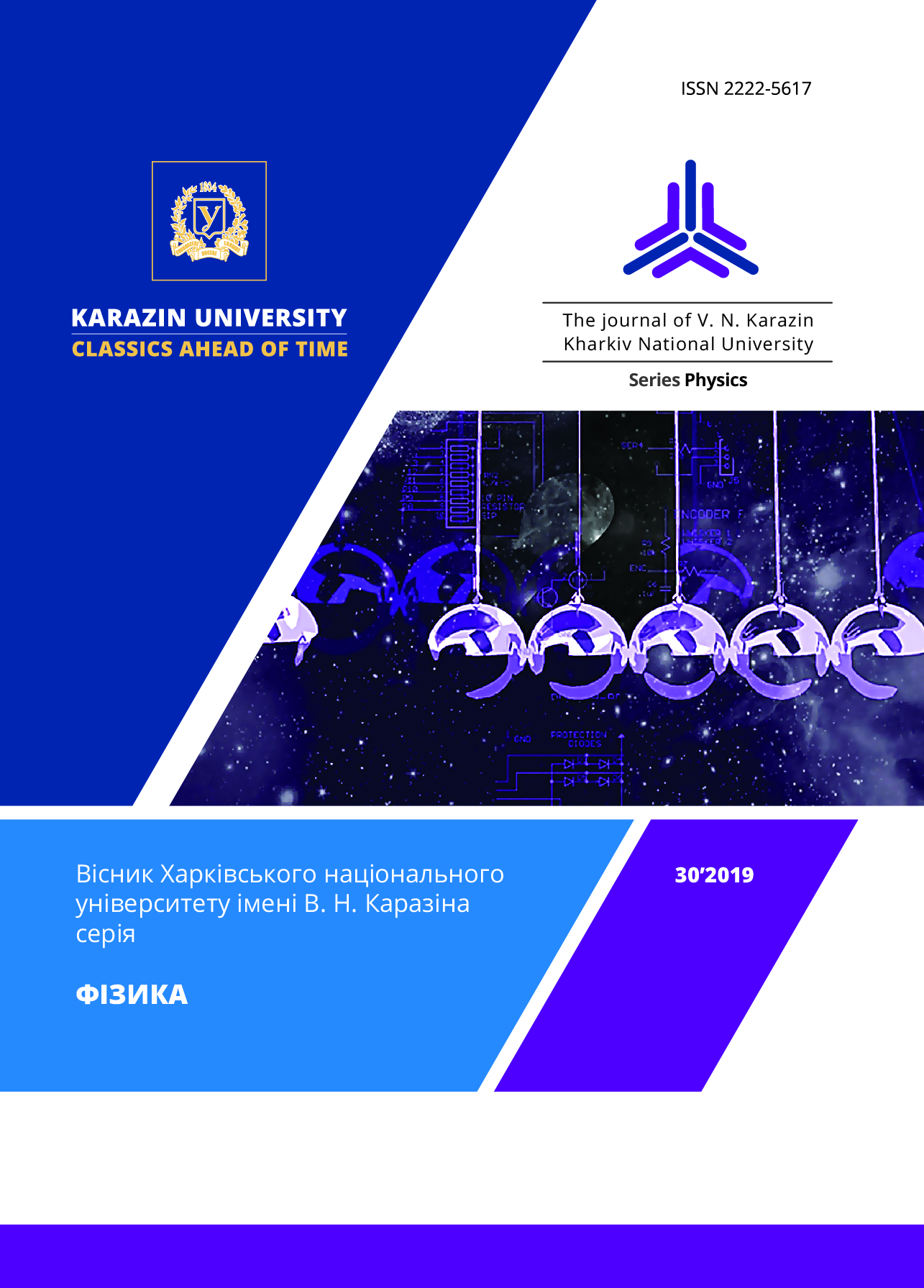Роздільна реєстрація іонізуючого випромінювання з різними питомими втратами енергії органічними гетероструктурованими сцинтиляторами
Анотація
Молекулярні органічні сцинтиляційні матеріали - це найефективніші об’єкти для створення систем, що виявляють такі види випромінювання, що є найбільш шкідливими для людини (альфа-частинки, швидкі нейтрони тощо). Органічні кристали та рідини здатні відокремлювати ці види випромінювання від фотонів фонового гамма-випромінювання. У цих сцинтиляторах іонізуюче випромінювання генерує два типи люмінесцентного відгуку - миттєву та затриману радіолюмінесценцію. Іонізуюче випромінювання з високою питомою втратою енергії dE/dx (втрати енергії E на одиницю довжини пробігу x частинки), генерують імпульс сцинтиляції в цих середовищах із високим внеском повільної складової. Останнім часом були розроблені нові типи сцинтиляторів, а саме гетерогенні органічні сцинтилятори, що містять монокристалічні сцинтиляційні гранули, які можуть бути об'єднані спіканням при гарячому пресуванні (полікристали), або можуть бути включені в прозору гелієву композицію (композитні сцинтилятори). Здатність гетерогенних органічних сцинтиляторів відокремлювати сигнали від випромінювань із різними dE/dx та фізична основа цього процесу в неоднорідних сцинтиляційних матеріалах залишаються однією з нагальних, не досліджених проблем.
У цій роботі представлені результати дослідження форми сцинтиляційних імпульсів для зразків органічних монокристалів, полікристалів та композиційних сцинтиляторів на основі стильбену в порівнянні з тими ж результатами, отриманими для п-терфенілу та антрацену для різних видів збудження іонізуючого випромінювання. Досліджено особливості впливу процесу триплет-триплетної анігіляції на формування у цих системах повільного компонента радіолюмінесцентного імпульсу. Виявлено, що здатність нових типів органічних гетероструктурованих матеріалів (полікристалів і композиційних сцинтиляторів) до роздільної реєстрації іонізуючого випромінювання за формою сцинтиляційного імпульсу близька до відповідних значень, що характеризують цю здатність для структурно досконалих монокристалів.
Завантаження
Посилання
J.B. Birks. The Theory and Practice of Scintillation Counting, Pergamon Press, London, (1967), 662 p.
M. Pope, Ch. Swenberg. Electronic processes in organic crystals, Clarendon Press, Oxford (1982), 821 p.
N.Z. Galunov, V.P. Seminozhenko. Radiolyuminestsentsiya organicheskih kondensirovannyih sred. Teoriya i primenenie. 2-e izdanie, Naukova dumka, Kiev (2015), 464 s. [in Russian].
N.Z. Galunov, N.L. Karavaeva, O.A. Tarasenko. M. Korzik, A. Gektin (Eds.) Engineering of Scintillation Materials and Radiation Technologies, Springer Proceedings in Physics 200, Springer. International Publishing AG (2017), p.195.
J. Iwanowska, L. Swiderski, M. Moszynski, T. Szczesniak, P. Sibczynski, N.Z. Galunov, N.L. Karavaeva. J. Instrum., (2011), v.6, P07007.
S.K. Lee, J.B. Son, K.H. Jo, B.H. Kang, G.D. Kim, H. Seo, S.H. Park, N.Z. Galunov, Y.K. Kim. J. Nucl. Sci. Technol., (2014), v.51, p.37.
I.F. Khromiuk. Tezy XV Vseukrainskoi studentskoi konferentsii "Fizyka ta naukovo-tekhnichnyi prohres", 22-24 kvitnia 2019 r., Kharkiv, Kharkivskyi natsionalnyi universytet imeni V.N. Karazina, (2019), s.22. [in Ukrainian]
I.F. Khromiuk. Tezy Mizhnarodnoi shkoly-seminaru dlia molodykh vchenykh «Funktsionalni materialy dlia tekhnichnykh ta biomedychnykh zastosuvan», 09-12 veresnia 2019 r., selyshche Koropove, Zmiivskyi raion, Kharkivska oblast, Ukraina (2019), s.10.
O. Tarasenko, N. Galunov, N. Karavaeva, I. Lazarev, V. Panikarskaya. Radiat. Meas. (2013), v.58, p.61.
L.M. Bollinger, G.E. Thomas. Rev. Sci. Instrum., (1961), v.32, p.1044.
N.Z. Galunov, E.V. Martynenko. Radiat. Meas. (2007), v.42, p.715.








3.gif)
